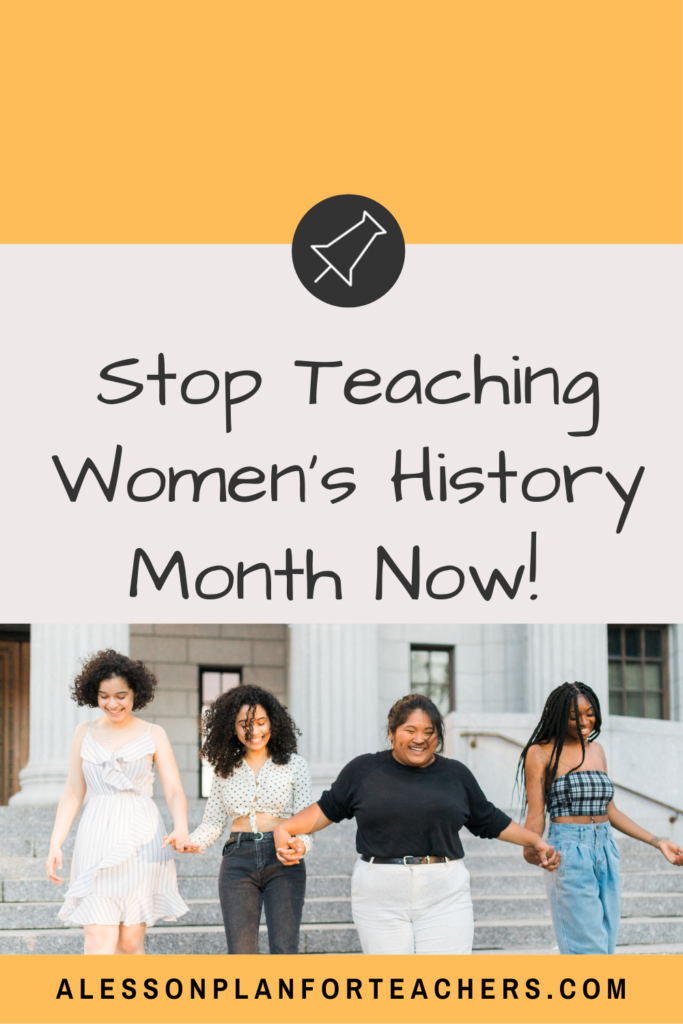Stop teaching Women’s History Month! Instead, start teaching women’s history all year round. While awareness months are great for exactly that – awareness, we cannot let them take away from teaching history, accurate history, throughout the year. We should instill the value of accurate history into our students. Authentic history covers all the bases and tells the entire story.

Teaching women’s history is an easy out. For years, it has been an excuse given for not integrating all histories into our lessons. We are not talking about teaching the basics of a person in a lesson. We are talking about teaching how all persons, despite race, gender, religion, or any other creed, have made contributions to history and to the society we live in today. Teaching women’s history has to look different now.
Rather than decorating our bulletin boards with pictures of significant women, we should be finding primary sources where students can come to their own conclusions about ground-breaking women, influential women, significant women, or even everyday women. Our world is not one which came to being at the hands of man. So, we shouldn’t teach as if it did. Women have been in politics for all time. (Think Ancient Egypt.) Women have made contributions to science throughout time. (Think Marie Curie.) And, women have done the backbreaking work, in every way, to support civilization as we know it. So what should that look like?
5 Reasons You Should Stop Teaching Women’s History Month
- Your lessons do not come out of a textbook. Textbooks, despite trying, to include women and minorities in recent years, do so with that sole intention. Their inclusions are often inauthentic and therefore, weaken the lesson our students should be learning about individuals in history.
- Start using more primary sources. If we look at the notes, journals, diaries, or simply images, from people of the past, we can see the incredible impact women have made throughout history.
- Let students come to their own conclusions. Simple analysis or inquiry-based lessons help students to discover history through their own lens, and often far more in-depth than what you would teach in a standard lesson.
- Stop teaching that those in power are those we should learn from. Leaders throughout history have had major flaws. True growth in society – any society – has come from the grass roots efforts of everyday people, not from those in power passing legislation.
- Start placing significance on social history over political or economic. All change over time has occurred at the hands of individuals, often women. If you want to teach economic impacts, teach the significant of women and their bread during the French Revolution. If you want to teach political history, teach how women in the 1970s brought about legislation – not only for women’s rights, but also on the direction of the Vietnam War.

Teaching about women should not be an addition to your lesson. It should be something that is so inclusive that you can’t tell you’re doing it. So, don’t teach women’s history. Instead, teach history.
If you want to go the more traditional route, here are a few resources for teaching about women in history. For a less conventional path to learning about women in history, try these inquiry-based lessons that focus on women and others who made a difference.
Happy Teaching!
